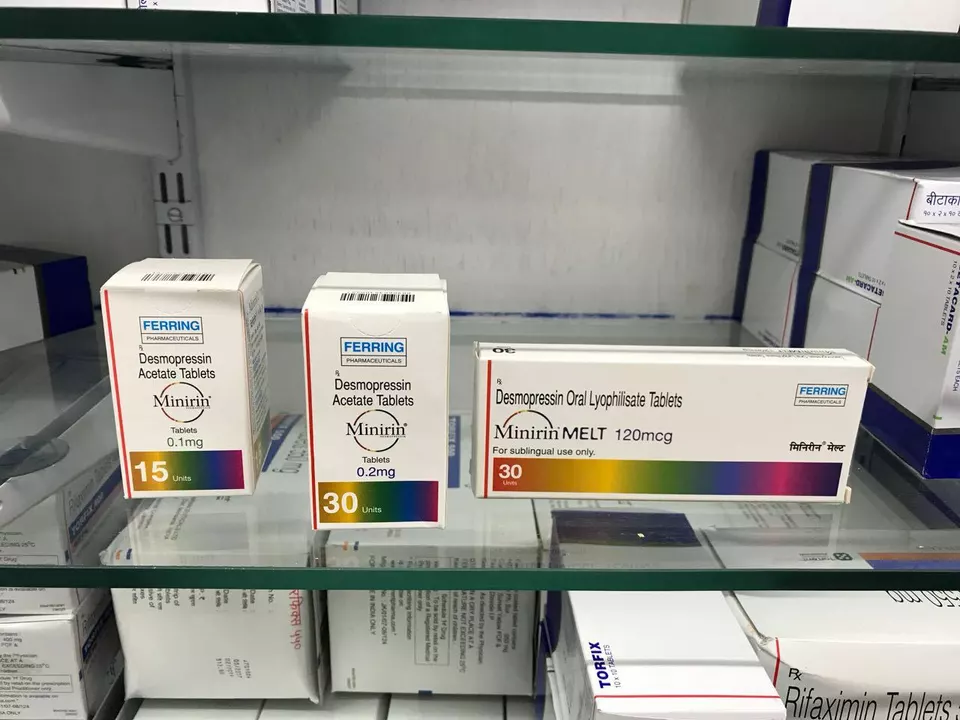Desmopressin — what it does and when people use it
Desmopressin (often called DDAVP) is a man-made version of the hormone vasopressin. It tells your kidneys to hold on to water so you make less urine. Doctors prescribe it mainly for central diabetes insipidus, bedwetting at night (nocturnal enuresis), and sometimes to help certain bleeding problems like mild hemophilia A or von Willebrand disease.
It comes as a tablet, a nasal spray, and an injection. Each form works the same way, but the dose and how you take it depend on why you need it. Your doctor will pick the right form and dose for your situation.
Simple safety rules and side effects
The main risk with desmopressin is low blood sodium (hyponatremia). That happens when you keep drinking a lot of fluid after taking the medicine. Early signs include headache, nausea, and feeling confused. Severe hyponatremia can cause seizures. If you get any of those symptoms, stop the medicine and get medical help.
Other common side effects are mild headache, stomach upset, and nasal irritation if you use the spray. Some people notice swelling in their ankles or hands. Older adults and people taking water pills, SSRIs, or tricyclic antidepressants have a higher chance of low sodium.
Practical tips for using desmopressin
Follow your prescriber's instructions exactly. For bedwetting, many doctors advise limiting fluids in the evening and taking the dose right before bed. For diabetes insipidus, dosing may be spread through the day. Don’t change your fluid intake suddenly while on desmopressin unless your doctor tells you to.
Get a blood sodium check before you start and again after a few days or a week, especially if you’re older or on other medicines that affect sodium. If your child is taking it for bedwetting, watch for odd behavior, severe headache, or vomiting—that could mean low sodium.
Never mix nasal spray and tablet doses without checking with your clinician. Some versions need specific storage—read the label. If you buy desmopressin online, use a reputable pharmacy and keep the prescription on file.
Want to stop the drug? Talk to your prescriber first. Stopping suddenly may change your urine volume and your sodium balance, so your doctor will usually guide a safe plan.
If you’re pregnant, breastfeeding, or have heart disease, kidney problems, or a history of low sodium, mention this to your doctor before starting desmopressin. That helps them tailor the dose and monitoring to keep you safe.
Questions for your doctor: How long should I take it? How often should my sodium be checked? What exact signs should make me call for help? Having these answers ahead of time makes using desmopressin much safer and less stressful.
Desmopressin for the Treatment of Polydipsia: A Comprehensive Guide
As a blogger, I recently came across the topic of Desmopressin for the treatment of Polydipsia, and I wanted to share a quick summary with you all. Desmopressin is a synthetic hormone that helps reduce excessive thirst and frequent urination, common symptoms of Polydipsia. It works by mimicking the natural hormone vasopressin, which helps regulate the body's water balance. This medication has been proven effective in managing Polydipsia, especially in cases related to diabetes insipidus and other medical conditions. So, if you or someone you know is suffering from excessive thirst, Desmopressin might just be the solution to look into!

